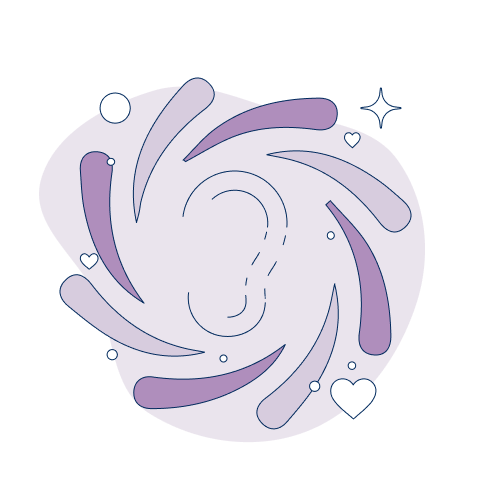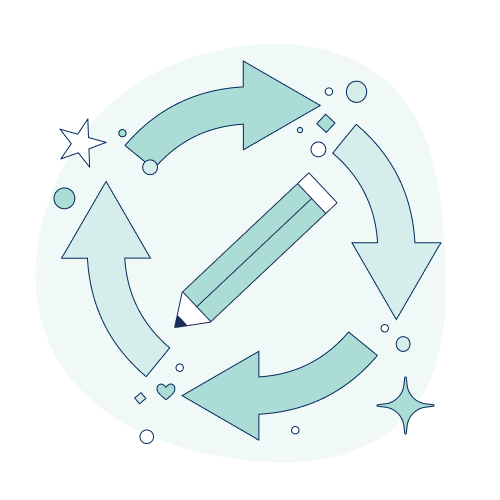
Design thinking isn’t just a process for solving problems, it’s also a mindset for creating. In this blog, Hayley discusses the unlikely connection between design thinking and music, drawing on the power of an iterative mindset coupled with a curious ear.
Written by Hayley Park, Senior Project Assistant & Communications Lead, Honours Bachelor of Arts, Communications, Culture, Information & Technology
Music as Design
I’ve always been two things: a designer, and a musician. I began playing the piano as a kid, often refusing to read sheet music and playing my favourite songs by ear instead. Creating music has always felt like seeing a palette of colours, and using them to paint a beautifully messy, continuously evolving scene. My approach to graphic design is often similar – constantly exploring, experimenting, and iterating. There has always been an interesting overlap in my life between music and design, leading me to explore how intertwined these two worlds actually are.
In practicing design thinking at the Innovation Hub, I’ve realized that the design thinking mindset occurs naturally in many unexpected parts of my life. What’s more, the influence of design thinking can teach us plenty about the process of creating music (and vise versa), from start to finish. So, what are these overlaps in mindset, and how can you use them to your advantage as an innovator?
A Listening Ear

A design thinking project typically starts with conducting initial research on your current problem space. At the Innovation Hub, this takes the form of a comprehensive environmental scan, where research teams immerse themselves in the happenings of a particular area of focus. In doing so, we learn about the current systems in place, the research that’s been done already, and the emerging practices of the field. Musicians naturally engage in this curious process of listening and learning before creating – analyzing the mechanics of different genres, exploring current trends, and talking with musicians alike. By always having an ear to the ground, musicians are able to continuously learn from others and build repertoires of tunes in their minds as a subconscious form of qualitative research.
The desire to listen and learn is the basis of every great design thinker and researcher. Before jumping in to crafting solutions, we acknowledge what we know – and most importantly – what we do not. Familiarizing ourselves with the current problem space equips us with a thorough understanding of the context that we are working in, so that we can identify untapped areas of creative potential. Luckily, musicians have a notoriously keen ear!
Play as Prototyping

With a catalogue of auditory data gathered, the next step of the music creation process is experimentation. For me, this process always involves a good measure of play. This is often unstructured, open time for musical exploration. The impromptu and fluid nature of ‘play’ is why it’s so valuable. It’s an opportunity to freely explore ideas without the pressure to have anything figured out just yet.
Play isn’t just about having fun – it also serves a critical function in the creative process. Playful creation gives us space to experiment freely as form of early prototyping. Each time I test something new out on the piano, I am prototyping something to see what works and what doesn’t, seeking possibilities in each idea. In design thinking, having an exploratory, “what if?” mindset enriches our work and encourages us to tap into our creativity throughout the ideation process, gearing us up for heaps of iteration and expansion later on.
Riffing & Remixing

When I play music, I rarely play the same thing twice. Not always for lack of trying – but because the iteration process is so irrevocably fluid. I love to remix and riff on the songs of others and of myself. There’s always a new angle to explore and test out. I find that musicians often have an innate knack for riffing – a thirst for trying new things, switching things up, testing the waters, and then doing it all again. Design thinkers, too, recognize the importance of continuous improvement and iteration. At the iHub, we always say that you’ll never get anything “perfect” on the first try, because there’s always room to develop and nurture a concept. There’s so much beauty in the process of developing and updating something until it takes its final form, and then being able to look back on the early stages with new insight and clarity. In my opinion, the iteration phase is the most important (and rewarding) part of any creative project.
In creative spaces, much of the iteration of our work stems from conversations and collaborations with peers, allowing us to view our work from multiple perspectives. At the iHub, our students and members of the Leadership Team demonstrate the power of collaboration every day, with each member contributing a unique perspective that, combined, improves and develops the project. Design research thrives on collaboration. Music does, too – we often forget that many of our favourite songs weren’t written and produced by one individual, but rather, a team of creatives with a shared goal. I love to hold jam sessions with other musicians, collaborate on songwriting, and create demo tracks to share with friends and family. Musicians have to be great at collaborating, just as designers do!
We’re All Design Thinkers!
As we often say, design thinking isn’t just a methodology, but a mindset. It’s about how you listen, investigate, collaborate, problem solve, and create. The spirit of innovation isn’t limited to a particular context. What’s more, in both design thinking and music, the journey is often the destination – so embrace the delightful process of exploration, experimentation, and continual learning. To all my musicians out there – you’re a design thinker, too!
0 comments on “What Design Thinkers and Musicians Have in Common – It’s More than You’d Think! ”